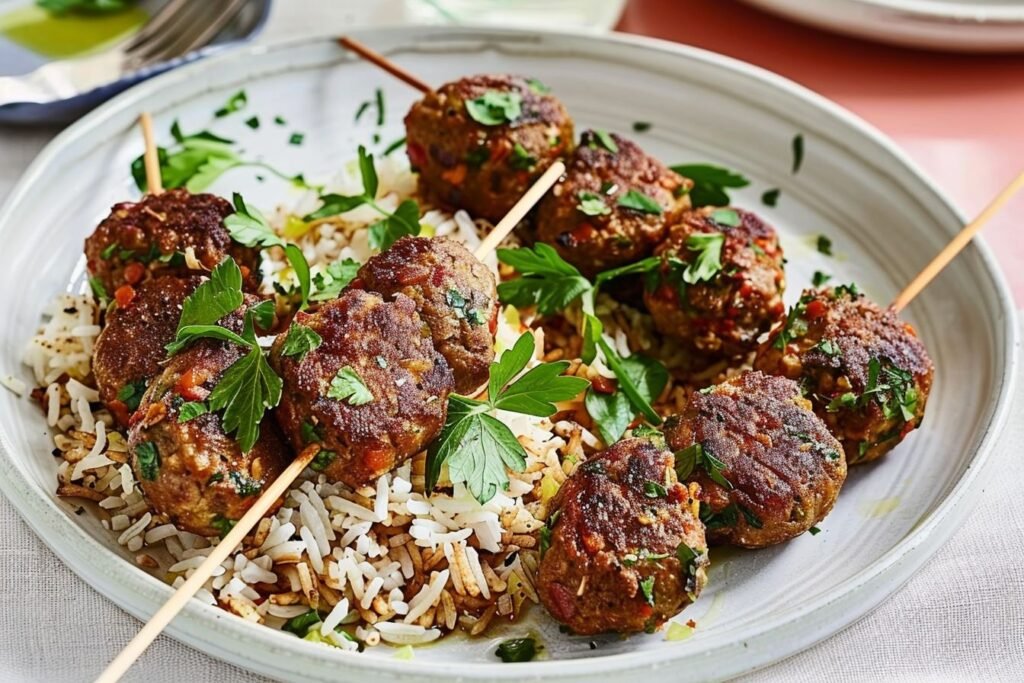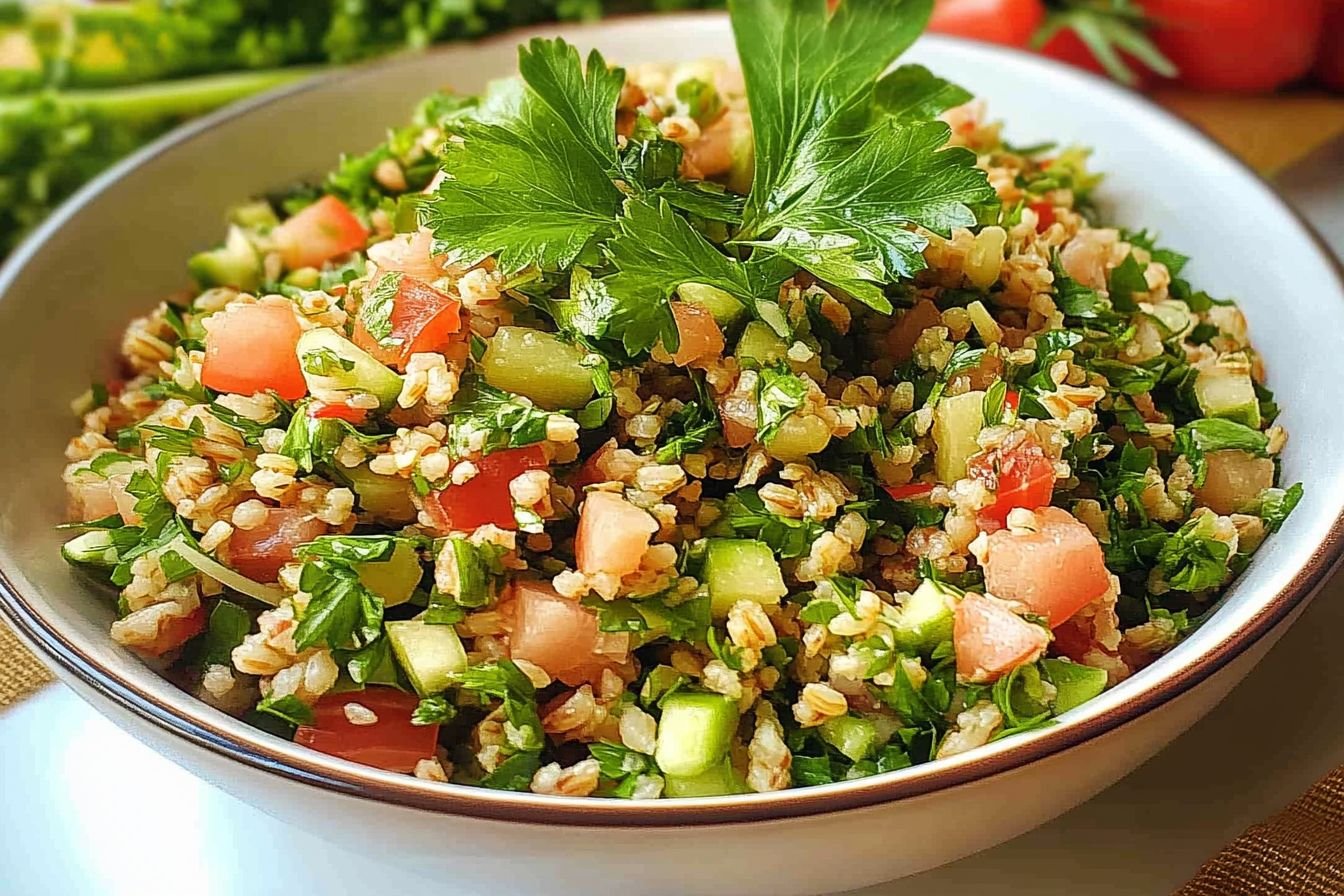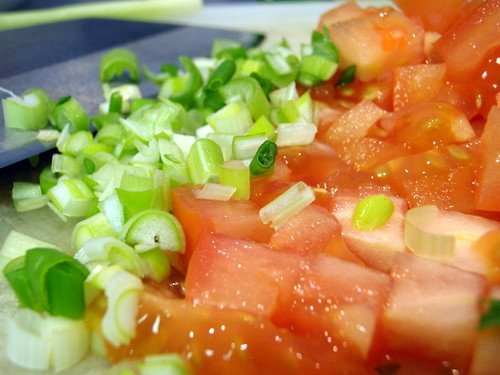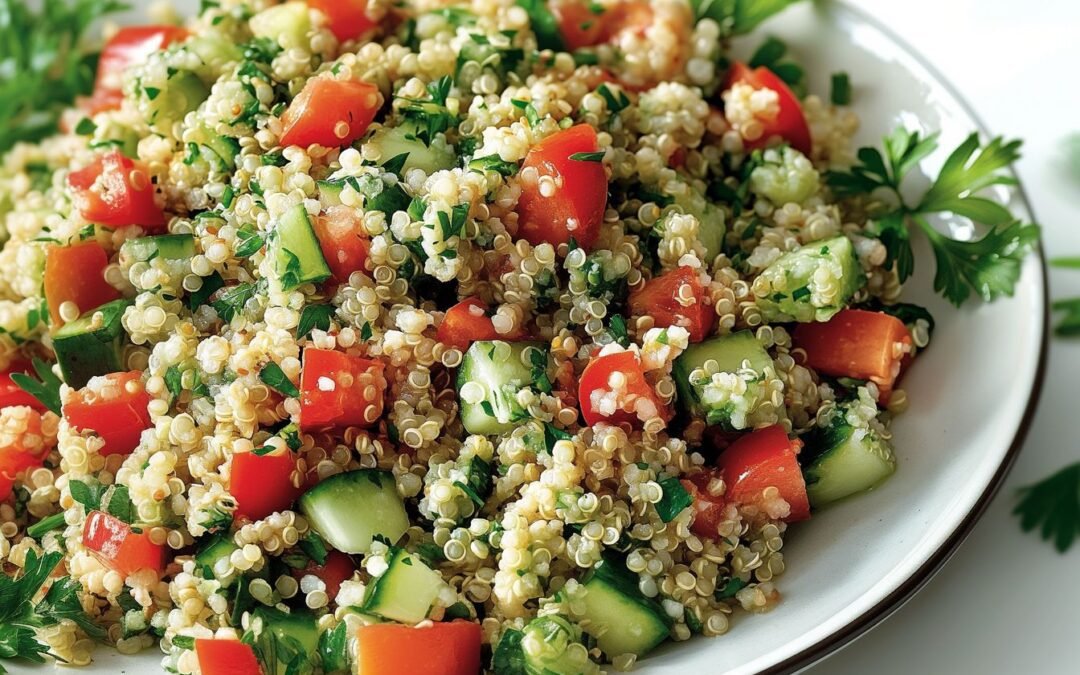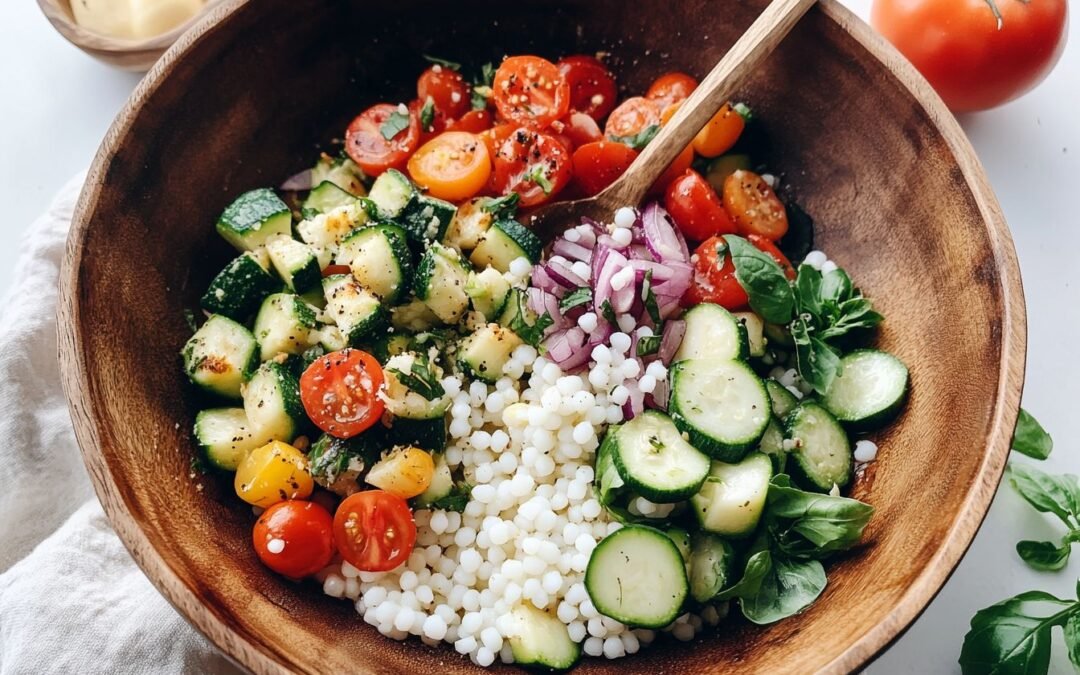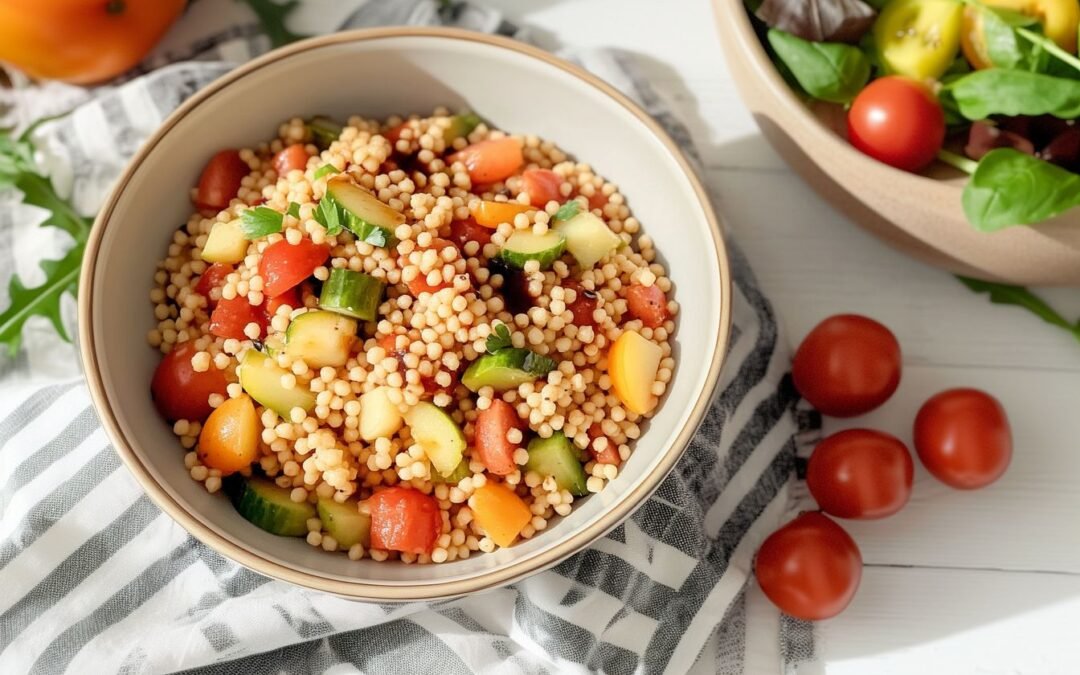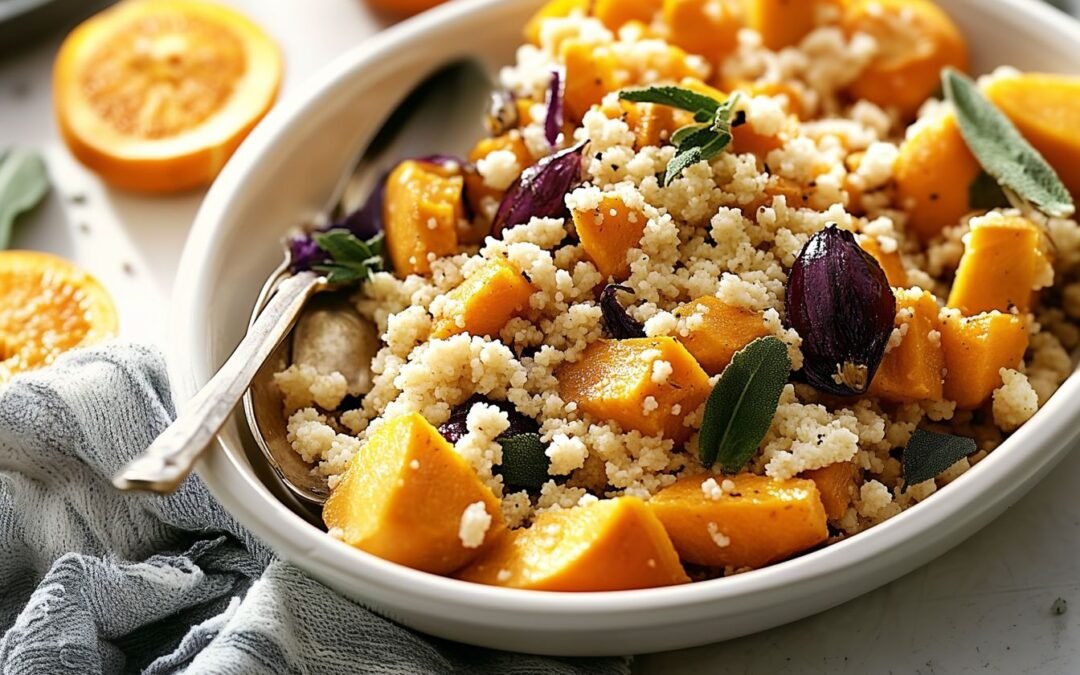Tabbouleh with freekeh is a vibrant and healthy dish. This refreshing salad combines the nutty flavor of freekeh with fresh parsley, tomatoes, and a zesty dressing, making it a perfect side or light meal. By incorporating freekeh, a nutritious grain, you elevate traditional tabbouleh into a robust dish packed with flavor and texture.
To make this delightful salad, you’ll need freekeh, fresh flat-leaf parsley, tomatoes, spring onions, lemon zest and juice, olive oil, and a bit of salt and pepper for taste. The combination provides a crisp freshness and offers a wholesome twist that keeps me returning for more. It’s a versatile dish that complements a variety of meals or can shine on its own.
Introduction to Freekeh
Freekeh is an ancient grain that has gained popularity for its nutritional benefits and unique flavor. I find its nutty taste and chewy texture add a delightful twist to many dishes.
This grain comes from young green wheat, harvested early and roasted to enhance its flavor. It boasts a rich history, originating from the Middle Eastern region, where it has been a staple for centuries.
Using freekeh in recipes is simple. I love incorporating it into salads, pilafs, and even soups. Its versatility makes it an excellent ingredient for both warm and cold dishes.
This grain pairs wonderfully with a variety of flavors, from fresh herbs to roasted vegetables. I enjoy experimenting with freekeh in many of my meals, as it consistently offers a satisfying and healthy option.
Ingredients:
- 65 g of freekeh
- 75 g of fresh parsley
- 100 g of diced tomatoes
- 2-3 chopped scallions
- ½ juiced lemon (also for zest)
- 1½ tbsp of extra virgin olive oil
- Salt and black pepper to taste
How to make tabbouleh with freekeh?
- Begin by rinsing the freekeh and transferring it to a saucepan containing 185ml (⅘ cup) of salted water.
- Bring to a boil, then reduce heat and simmer for approximately 15-20 minutes until tender. Remove from heat, cover, and allow to rest for 5 minutes.
- While the freekeh cooks, prepare the parsley by washing and thoroughly drying it. Remove the stalks and finely chop the leaves, placing them in a medium bowl. Dice the tomatoes and add them to the parsley.
- Trim and thinly slice the spring onions before incorporating them into the bowl.
- Enrich the mixture by stirring in lemon zest, lemon juice, and olive oil.
- Taste and adjust seasoning with salt and pepper as needed.
- Once the freekeh has cooled slightly, drain any excess liquid and combine it with the parsley mixture. Toss gently to distribute ingredients evenly.
Nutritional Information
Tabbouleh made with freekeh offers a range of nutritional benefits. Freekeh itself is a whole grain, providing a good source of fiber, protein, and essential vitamins.
Here are some key nutritional components:
| Nutrient | Amount per 100g |
|---|---|
| Calories | 116 kcal |
| Protein | 4 g |
| Carbohydrates | 14 g |
| Fiber | 3 g |
| Fat | 6 g |
| Sodium | 13 mg |
| Potassium | 198 mg |
| Sugar | 2 g |
| Calcium | 44 mg |
| Iron | 2 mg |
| Vitamin A | 1851 IU |
| Vitamin C | 37 mg |
Serving Suggestions
Plating and Presentation
For serving I like to use a shallow bowl or platter to showcase the vibrant greens and grains.
For a pop of color, a sprinkle of pomegranate seeds or chopped fresh herbs like mint and parsley adds visual appeal.
I often drizzle a bit of extra virgin olive oil on top before serving. This not only improves the look but also enriches the flavor. Arranging the salad in layers can create a more dynamic presentation, allowing the bright ingredients to shine.
Pairing with Main Dishes
This salad pairs beautifully with various dishes. I find it complements grilled meats well, such as chicken, lamb, or shrimp. The fresh flavors of the salad act as a refreshing contrast to the charred, savory notes of the grilled proteins.
For a lighter meal, serving it alongside hummus and pita creates a delightful spread. I also enjoy adding it to a plate with roasted vegetables or using it as a filling for wraps. This versatility makes it a fantastic side dish that enhances any meal and provides a satisfying texture.
Storage and Leftovers
I often find that tabbouleh with freekeh tastes even better the next day. I use an airtight container, which helps maintain freshness when stored.
Here are some storage tips:
- Refrigeration: Keep the tabbouleh in the fridge. It stays good for about 3 to 5 days.
- Freezing: I recommend not freezing tabbouleh, as the texture of the vegetables may change upon thawing.
Leftover Ideas:
- Wraps: I enjoy using leftovers in wraps with grilled chicken or falafel for a quick lunch.
- Salads: Mixing tabbouleh with greens adds freshness to another meal.
Before serving leftovers, I check for freshness. If any ingredients look off, I discard them. Always stir the dish before serving to redistribute flavors.
Tips for Large Batches
- Proportions matter: When scaling up the recipe, maintain the balance between freekeh, and fresh ingredients.
- Prep ahead: Chop your parsley, mint, and vegetables ahead of time. Storing chopped ingredients in airtight containers preserves freshness and saves time during assembly.
- Use a large bowl: Select a bowl that accommodates the increased volume. This prevents spills and makes mixing easier. A wide, shallow bowl works best for tossing ingredients together.
- Season gradually: Add salt, lemon juice, and olive oil incrementally. This helps you control the flavor as the batch size increases. Taste as you go to ensure balanced seasoning.
- Store properly: If not serving immediately, refrigerate in an airtight container. Tabbouleh is best consumed fresh, but it can last for a couple of days. The flavors meld together nicely over time.
- Plan for serving: Have a good serving dish ready. A large platter showcases the colorful ingredients, making it visually appealing for gatherings. Consider garnishing with extra herbs for added flair.
Conclusion
Making tabbouleh with freekeh brings a delightful twist to a classic dish. The nuttiness of freekeh complements the fresh herbs and vegetables beautifully.
I enjoy the texture that freekeh adds, providing a chewy contrast to the crispness of tomatoes and cucumbers. It’s a nutritious choice, packed with fiber and protein.
Whether served as a side or a main dish, freekeh tabbouleh stands out. It’s healthy, delicious, and easy to prepare. I love sharing it with friends and family.
As you read above, pairing this tabbouleh salad with meat makes a wonderful meal.
Get this beef kofta and rice recipe now (by clicking the image below):
